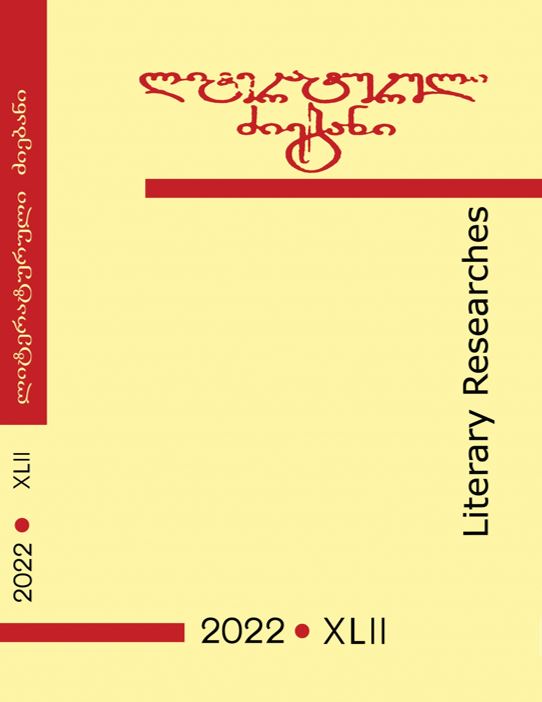გამოქვეყნებული 2022-04-30
საკვანძო სიტყვები
- აშუღი,
- საიათნოვა,
- თბილისური კილო,
- ამიერკავკასია,
- მეფე ერეკლე II
როგორ უნდა ციტირება
ანოტაცია
The minstrel of love, Sayat-Nova is the only one among the ashugs, poetsingers who perfectly displayed the artistic form and content of this specific poetry. He composed his songs in three languages – Georgian, Armenian and Azerbaijani. In the history of 18th-century urban poetry of Tbilisi, he created a distinctive style, introduced street and market jargon, the language of the lower social layer of the urban population, whose sadness or joy, suffering or happiness were taken by him to heart.
The poetry of ashugs, introduced and established in eighteenth-century Georgian literature, was an entirely new genre. It was believed that the ashugs originated in Tbilisi. Georgia’s geographic and cultural location has long attracted the interest of its neighbors. As a result, Christians, Muslims, and Jews coexisted peacefully in Tbilisi, which became a center of rapprochement
of national cultures and dialogue between people of different nationalities.
Sayat-Nova started writing verses in Georgian, then (at the age of thirty) – in Armenian. The fact that for some time Sayat-Nova was the court poet to King Erekle II significantly contributed to the priority of writing his verses in Georgian. Most of his listeners were Georgian-speaking population. He is regarded as a kind of symbol of the relationship between the peoples of Transcaucasia, the language style of the city of Tbilisi took on a peculiar color in Sayat-Nova’s verses under the influence of the native Armenian.
He was King Erekle’s favorite minstrel, a feast lover, beautiful women admirer and comforter of the widows, orphans and the oppressed. His poetry resonated most with the city’s lower social class. It was very personal, intimate for them. That is why Sayat Nova’s verse has been preserved in people’s minds.
The poetry of ashugs was mainly of amorous character. However, it also contained slashing criticism. The poets used song to express bitter and ambiguous words. Sayat-Nova believed that human dignity consists in love for one’s neighbor, people in general, doing good, speaking kind words. In his opinion, the arrogance and wrong-doing cannot be justified by noble birth: he is not malevolent, vindictive, but ambitious, he is aware of the worth of his verses. Sayat-Nova’s poems have the form of an appeal. He frequently uses alliteration and makes the text extremely melodious. The “mukhambazi” structure and intonation of the verse, tautological rhymes, rhetorical questions and allegories distinguished him from the succeeding generation of ashug poets; his poems dedicated to KingErekle are of special importance... The poet Sayat-Nova, recognized as a major public figure in Georgian scholarly literature, belongs to all three peoples of Transcaucasia: Georgia, Armenia, Azerbaijan.

